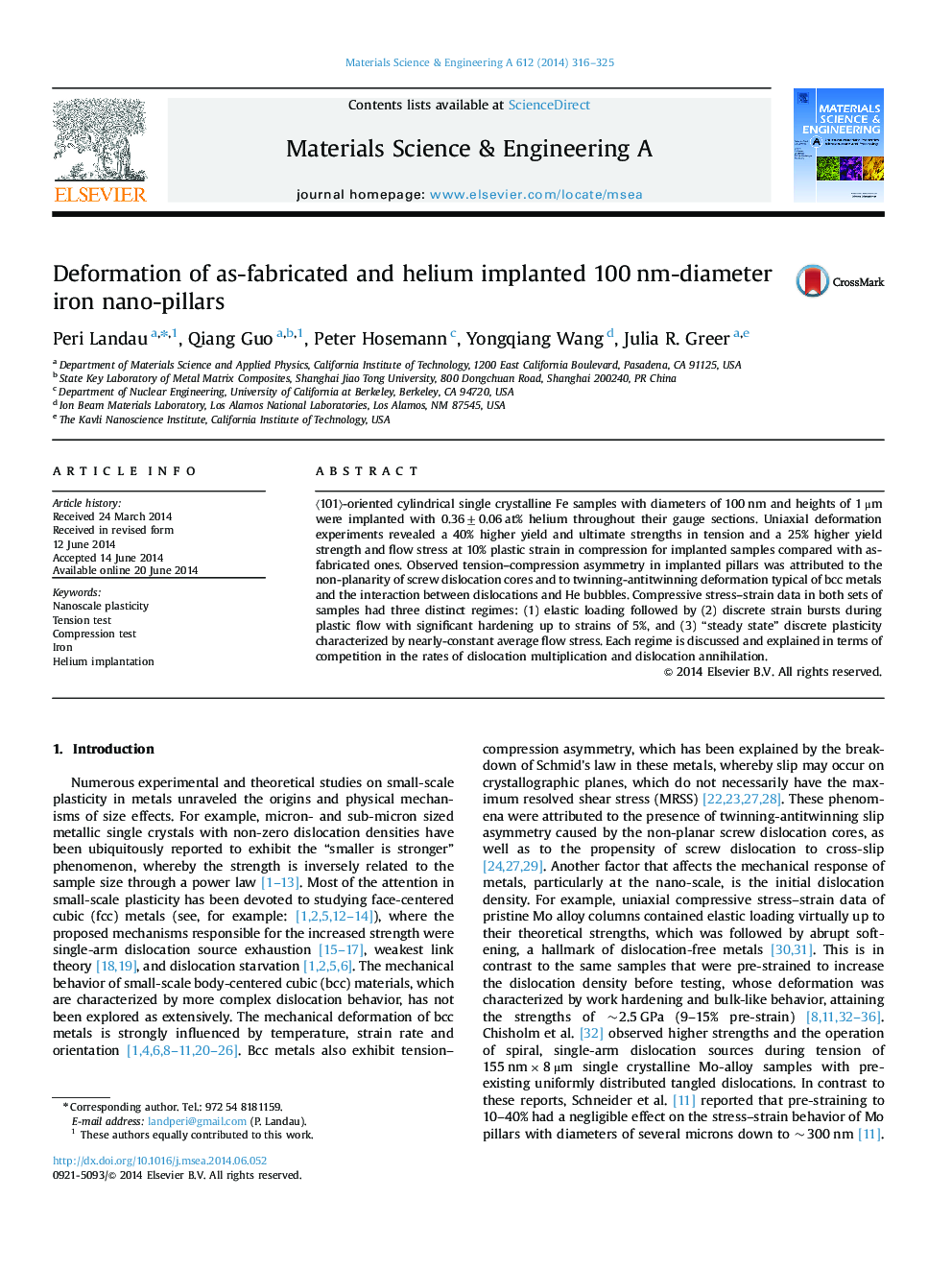| Article ID | Journal | Published Year | Pages | File Type |
|---|---|---|---|---|
| 7980871 | Materials Science and Engineering: A | 2014 | 10 Pages |
Abstract
ã101ã-oriented cylindrical single crystalline Fe samples with diameters of 100 nm and heights of 1 μm were implanted with 0.36±0.06 at% helium throughout their gauge sections. Uniaxial deformation experiments revealed a 40% higher yield and ultimate strengths in tension and a 25% higher yield strength and flow stress at 10% plastic strain in compression for implanted samples compared with as-fabricated ones. Observed tension-compression asymmetry in implanted pillars was attributed to the non-planarity of screw dislocation cores and to twinning-antitwinning deformation typical of bcc metals and the interaction between dislocations and He bubbles. Compressive stress-strain data in both sets of samples had three distinct regimes: (1) elastic loading followed by (2) discrete strain bursts during plastic flow with significant hardening up to strains of 5%, and (3) “steady state” discrete plasticity characterized by nearly-constant average flow stress. Each regime is discussed and explained in terms of competition in the rates of dislocation multiplication and dislocation annihilation.
Related Topics
Physical Sciences and Engineering
Materials Science
Materials Science (General)
Authors
Peri Landau, Qiang Guo, Peter Hosemann, Yongqiang Wang, Julia R. Greer,
